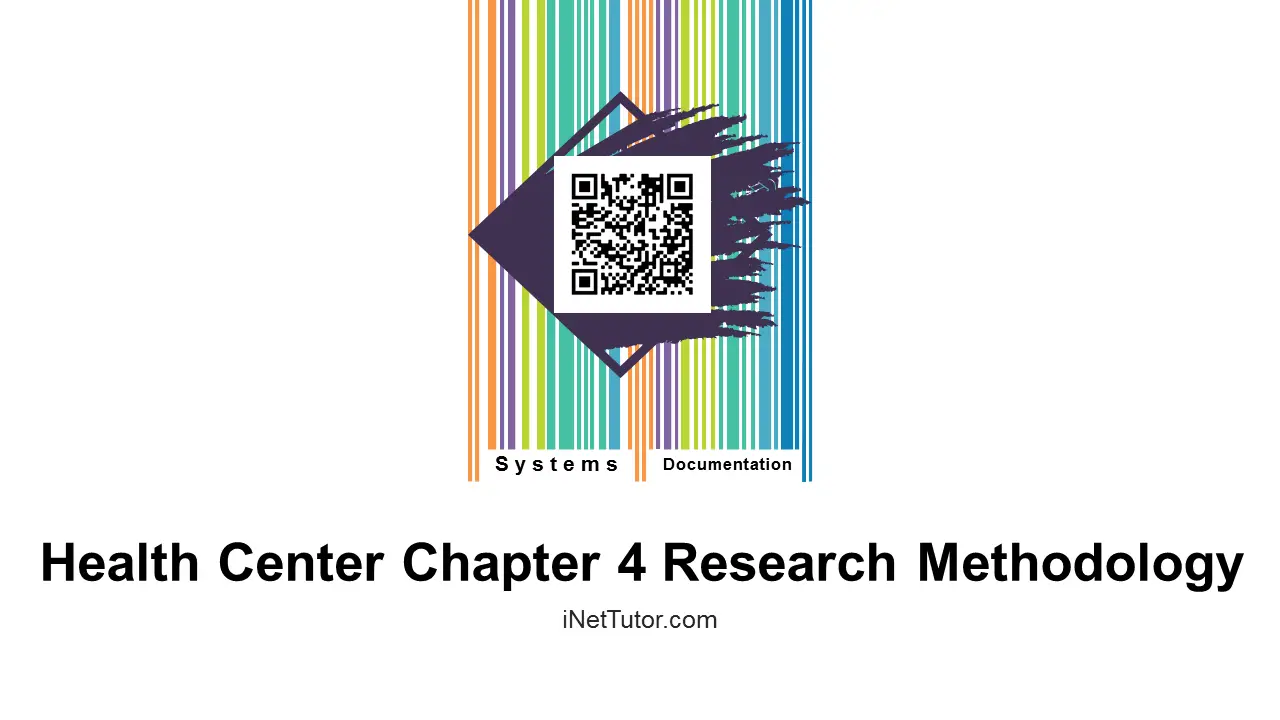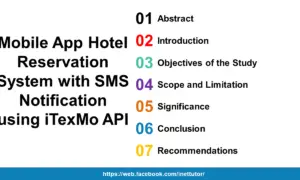Health Center System Chapter 4 Research Methodology
CHAPTER IV
METHODOLOGY
This chapter presents the Software development model used which is the waterfall model that includes many stages such as requirements definition, System and software design, Implementation and unit testing, Integration and System Testing and Operation and maintenance.
Waterfall Approach Model used for the Barangay Health Center Recording Information System.
Requirements Analysis Documents
This section presents the software, hardware and staff requirement and qualification.
Software Requirements
The following are the software used for the development and for the implementation of the system:
Operating System: Windows XP
Software Development: Microsoft Visual Basic 6.0
Documentation : Microsoft Word 2007 and MS-Excel 2007
Microsoft XP SP2 is compatible with the Microsoft Visual Basic 6.0. Microsoft XP is reliable and very portable OS, since it does not require more space of the memory upon loading thus, it runs the program very quickly. Considering that MS Visual Basic 6.0 was the chosen programming language for software development primarily because enhanced user interfaces with dockable user forms, auto-anchoring of controls, and improved image support. It also allowed building end-to-end solutions, from data entry forms to complex report outputs. Finally, MS Word is powerful word-processing software used to create, edit and modify the documentation. It is user-friendly and very suited to the development of this documentation.

Hardware Requirements
The following are the specifications as shown below:
- Processor : Intel Dual Core 2.0Ghz or higher
- Memory : 1GB DDR2 (Recommended)
- Disk Storage : 500 GB (Recommended)
- Drive : CD/DVD-RW 60x or up (Recommended)
- Video Card : 1GB GeForce VC (Optional)
- USB Slot : USB Port 2.0 or up (Recommended)
Staff Requirement & Qualification
The system design and uses suit the need of the Barangay health canter particularly to provide an accurate and reliable health profile report and a user-friendly presentation that provides the user an easy and quick access of information for every transactions do at barangay health canter itself.
The system is intended to the persons who have direct involvement in the processing of health programs, medical services, monitoring and profiling. These are the following:
Nurse. They are being an in-charge of the medical services and health programs in barangay, they must have been trained and oriented in the system to use them correctly.
Barangay Health Workers. In the absence of the midwife in-charge they must take over the tasks of the midwife. System functions must be explained and demonstrated to them properly.
Design of Software and Process
Below is the tree representing the hierarchy of system functionality grouped according to the classification of operations. It consists of the menu headers such as Records, Reports, and Database.
Context Data Flow Diagram
Data Flow Diagram of Barangay Health Center Recording Information System.
The first exploration of data flow diagram the patients provide details patient complaints into database and the administrator provides print reports or patient health records to the patients.
The second exploration of data flow diagram, the administrator checking or monitoring the patient information and database provides patient records and patient health log, patient health Sickness information reports and patient log reports.
Entity-Relationship Diagram
Figure 3 below presents how the process of consultation. The Nurse/Assistant diagnoses the patients and the patient provide details information and log the consultation date and then provide results about the patient health records/reports.
Figure 4. First Explosion ERD of Barangay Health Center Recording Information System for Patient.
Development and Testing
This phase discussed the implementation and unit testing of of Barangay Health Center Recording Information System. This phase also discussed if the recommended functions and suggestions of the respondents and users are met.
Initial Testing Phase
In this phase, we performed a series of unit testing to check for any possible problems that may encounter during implementation and operation of the software and if
the specification has been meet. A self-made testing tool was used in measuring the initial and final testing. Below were the distributions of the respondents for the initial and final testing.
The respondents of the study are the health center personnel of Barangay Dian-ay Health Center because they are the persons who will use the system.
Developers Initial Testing Instrument
Developers self-made testing instrument have been composing of two (2) parts. The part I was on the profile of the respondents and the part II was on the items on the included functions and features of the Barangay Health Center Recording Information System. The responses for the functions/features were Very Important, Important, Average, Less Important, and Least Important. The researchers used a survey questionnaire as the main tool for data gathering process. It will serve as foundation for the development the Barangay Health Center Recording information System.The interpretation is 4.9 it is mean Very Important.
Validity of the Initial Testing Instrument
The developers had been presented their self-made testing instrument to the evaluators 1 English critic teacher and 2 IT experts for evaluation for checking our conformance to the standard for validation purposes. The three (3) evaluators/experts rated it in terms of accuracy referred to the precision computations and control. The validity referred to the degree to which it is designed to measure according to Carter V. Good and Douglas F. Scales. The interpretation is 3.96 it is mean Good.
Expert testing
In this phase the health center personnel compared the developed Barangay Health Center Recording Information System to the present manual barangay health center recording/profiling system where they had been using it. And the experts rate our owned made user acceptance testing together with our questionnaire.
As the Barangay Health Center Recording Information System underwent examinations or testing in this phase we will know if the proposed system developed functioned well or work well, and or there is a bit changes of the system for improvement but depending upon the suggestion of the three IT experts if there is need to be improve or to add. In the evaluation of the Barangay Health Center Recording Information System, the developers had been used the McCall’s Software Quality Model for the assurance of the evaluation by the software expert. The interpretation is 3.60 it is mean GOOD. (See Appendix K)
Final Testing
The final testing instrument is categorized in two (2) the Ease to Use and the User interface. The respondents will be rating after the initial and the expert testing the developed proposed system and the interpretation is 4.41 it is mean Very Good (See Appendix N)
After the series of testing and evaluating the system by the three (3) IT experts, the system was prepared for the final testing to check the features and its function of the Barangay Health Center Recording Information System. To meet the users expectation, thus the system work correctly/accurately and accordingly.
User Acceptance/Final Testing Phase
This is the phase, where the Barangay Health Center Recording Information System was be installed and maintained after the actual implementation. For the proper installation of the Barangay Health Center Recording Information System, one must take consideration the hardware and software requirements were considered. Similarly, this was also the stage where the supports about the software were provided. The clients/users was required to have a training to enable to them familiarize fully the whole system and how to operate the system properly.
Integration and System Testing Phase
This is the phase where the Barangay Health Center Recording Information System was integrated and tested after it was implemented and undergone testing to the intended users. It informs the developer if there are any suggestions, errors, and if the systems functionality worked well.
Operation and Maintenance Phase
This is where the operations and maintaining the system happens; this will be the time that all errors are corrected, weak areas are pointed out to be strengthened as well as security issues. These problems arise after the system has been tested by the practical users so the issues related to the system can be solved and upgraded for efficient and effectiveness of the system.
Credits to the authors of the project.
You may visit our facebook page for more information, inquiries and comments.
Hire our team to do the project.


